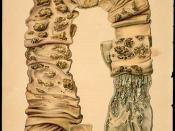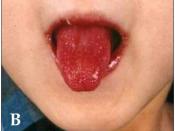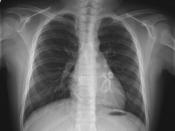Kawasaki Disease is a disease that affects young children. It can cause any of these symptoms: fever, skin rash, bloodshot eyes, swollen lymph nodes, heart problems, and/or joint problems. No one knows exactly what causes Kawasaki disease. Some doctors think a virus or bacteria may cause it. The illness can last from 2 weeks to a few months. The reason that I chose a study on this disease is due to the fact that the daughter of a very good friend of mine is currently receiving treatment for this. The article that I chose to use for this research is from the journal Clinical & Experimental Dermatology. The article title is "Kawasaki Disease: An Update" by Nasr.
This article was chosen in order to better familiarize myself and my friend of the causes of this disease. Nasr says that there are two theories as to the cause of Kawasaki Disease.
The first is "The infectious agent theory". This theory suggests that possible agents of this disease may include "proprionbacterium acnes, Rikettsiea, Ebstein-Barr virus and retroviruses". The other theory that Nasr explains is "The suprantigen theory". All in all, this theory suggest that the disease may be caused by an immune deficiency in the child.
From this point, the journal article continues to explain what happens to the body, on a microscopic level, when it is attacked by this disease. These affects vary from vasiculitis to pericarditis and myocarditis. This shows why the disease must be diagnosed early. Without early detection, the child may have long term heart damage including arrhythmias, heart attack and stroke.
"Intravenous gammaglobulin given early in the disease has been shown to decrease the incidence and severity of coronary artery lesions". This is the most common method of treatment for children with Kawasaki Disease. Continued treatment...


